
Gardenia flowers hold a special place in your heart for their elegance and sweet fragrance.
But do you know the symbolic meanings hidden within these delicate blossoms?
Gardenias have a rich history and a variety of symbolism associated with them, making them not only beautiful but also meaningful.
Originating in Asia, gardenias represent purity, elegance, and refinement.
They have expressed various sentiments throughout history, including trust, hope, clarity, renewal, peace, and protection.
As you admire these delicate flowers, you can now appreciate more than just their appearance but also their deeper meanings.
White flowers, like gardenias, often symbolize innocence, new beginnings, purity, and elegance, adding to their mystique.
Whether you’re giving a bouquet as a gift or simply admiring their beauty in your garden, understanding the symbolism of gardenias will enhance your appreciation for these elegant flowers.
In this article, we'll cover
1. Gardenia Flower Origins and Characteristics
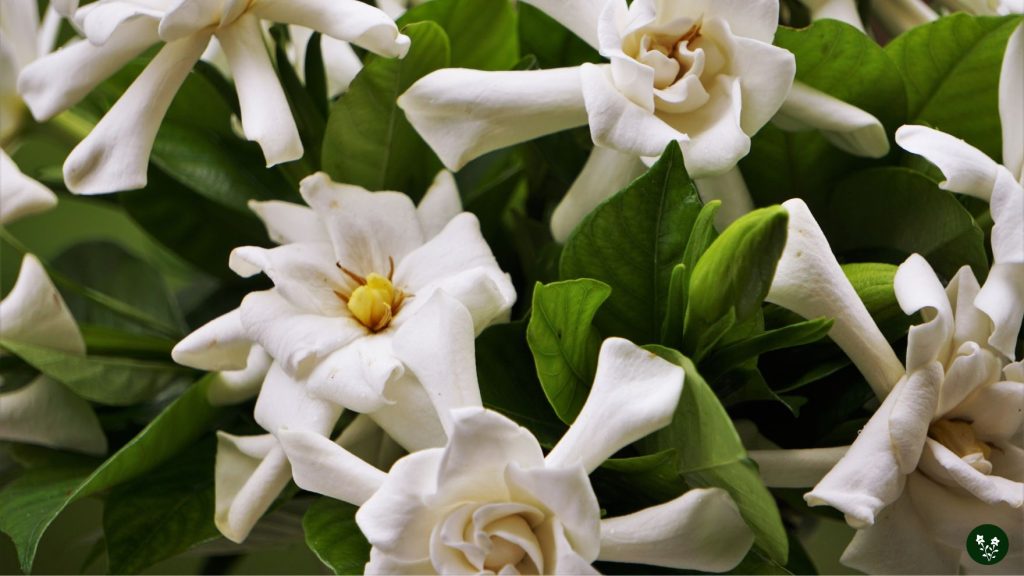
History and Origin of the Gardenia
Gardenias originated in tropical and subtropical regions of Africa, Asia, and the Pacific islands.
Named after the Scottish physician and naturalist Alexander Garden, these beautiful flowers have grown in Asia for over 300 years.
Initially, they were harvested for their use as a yellow dye and for medicinal properties, such as treating anxiety, infection, and depression.
Common Names
You might know Gardenias by names such as Cape jasmine or Gardenia jasminoides. These fragrant flowers are used for several purposes, including gifting and decorating, and they symbolize trust, hope, clarity, renewal, peace, and protection.
Physical Features
Gardenias belong to the Rubiaceae family, with over 140 species of shrubs and trees.
Typically displaying bright white, sweet fragrance, these flowers are often chosen for wedding bouquets, symbolizing purity, love, and refinement. However, some species might also showcase lovely shades of yellow.
Growing Conditions and Care
As an avid gardener, you must understand the appropriate growing conditions and care required for Gardenias.
These evergreen shrubs thrive in well-drained, acidic soil with a pH between 5.0 to 6.0.
Make sure you provide them with a sunny or partially shaded location and maintain consistent moisture in the soil.
Additionally, keep an eye out for pests such as whiteflies, mealybugs, and scale insects, which can damage your plant’s foliage.
During the blooming season, regularly remove spent flowers to encourage more blooms.
Gardenias also benefit from a balanced, slow-release fertilizer applied during their active growth periods. To promote bushiness and encourage better flowering, you can lightly prune your plants after they bloom.
2. What do Gardenias Symbolize?
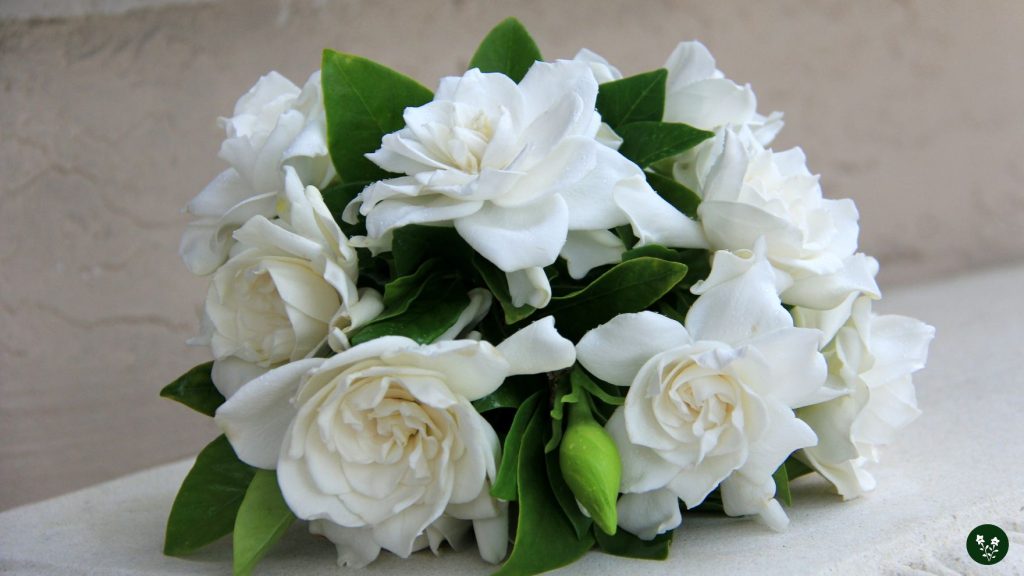
Etymological Meaning
The gardenia flower (Gardenia jasminoides) is named after a botanist named Alexander Garden.
This beautiful flower was given Gardenia’s common and generic name in Garden’s honor, while Carolus Linnaeus classified the genus.
Cultural Significance
Gardenias have held unique and meaningful symbolism throughout history and across various cultures. Your gardenia flower holds several symbolic meanings:
- Purity: Gardenias represent purity due to their bright white color, making them an ideal choice for wedding bouquets. They signify the purity of love and relationships, as well as the refined beauty of the bride.
- Gentleness: The delicate nature of gardenia petals symbolizes gentleness, adding a touch of softness to your floral arrangements.
- Secret love: Gardenias can symbolize secret love or admiration when given as a gift. These fragrant flowers make a discreet, elegant statement to someone special.
- Spiritual: In some beliefs, gardenias are used in meditation and spiritual practices for self-reflection and enlightenment. The shiny, waxy leaves are symbolic of clarity, helping you connect with your inner self.
- Protection: Gardenia flowers are also associated with protection, shielding you as you navigate through life’s challenges.
Gardenias hold various meanings in the language of flowers, such as trust, hope, renewal, and sometimes even dreams and intuition.
Their captivating floral scent only adds to their allure, making them a popular addition to bouquets and flower arrangements.
In parts of Asia, gardenias are associated with peace and clarity. Hindi spiritual practices often use them to help one focus and achieve a peaceful state of mind.
Gardenias’ soothing fragrance and elegant appearance make them a cherished symbol across cultures and traditions.
3. Gardenia Flower Colors and Their Meaning
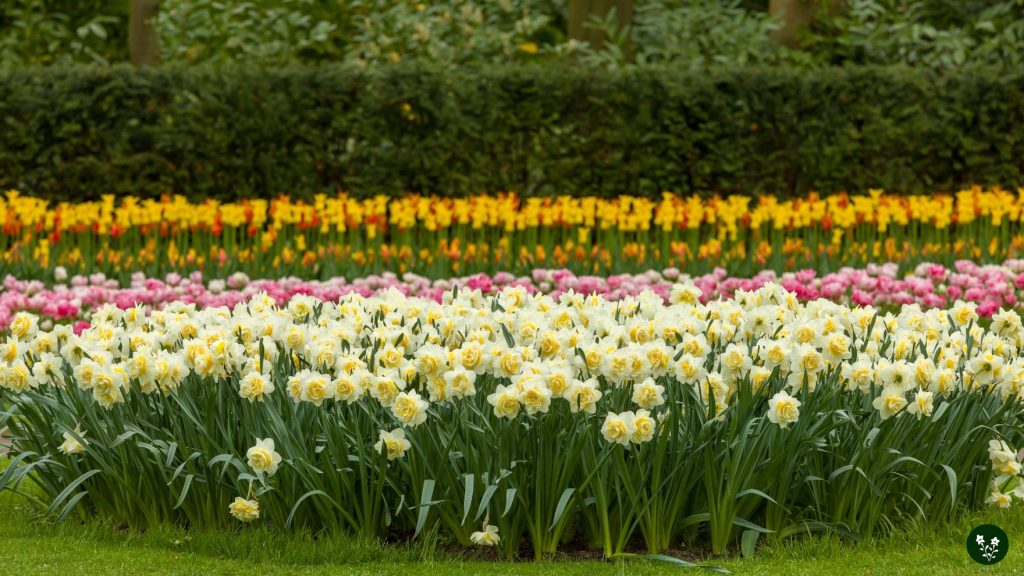
Gardenia flowers come in various colors, each with its unique meaning. You’ll learn the meanings associated with pink, white, blue, yellow, red, and purple gardenia flowers.
Pink Gardenia Flower Meaning
Pink gardenias symbolize grace and elegance. Their delicate pink hue makes them a perfect representation of youthful charm and beauty.
If you want to express admiration or warm feelings towards someone, a pink gardenia can convey your sentiments eloquently.
White Gardenia Flower Meaning
White gardenias are generally associated with purity, innocence, and new beginnings. They also symbolize clarity, trust, and hope.
Gifting a white gardenia to someone can show your love, respect, and trust in the relationship.
Blue Gardenia Flower Meaning
Blue gardenias are relatively rare, making them a unique and valuable gift. They represent tranquility, peace, and serenity.
When you give someone a blue gardenia, you wish them a sense of calm and inner peace.
Yellow Gardenia Flower Meaning
Yellow gardenias symbolize friendship, joy, and happiness. They’re a great way to brighten up someone’s day and bring some cheer to their life.
If you want to celebrate a friendship or simply spread positivity, consider gifting a yellow gardenia.
Red Gardenia Flower Meaning
Red gardenias signify deep love, passion, and desire. Their rich red color makes them popular for romantic occasions, such as Valentine’s Day or anniversaries.
A red gardenia can be a beautiful expression of your feelings for someone special.
Purple Gardenia Flower Meaning
Purple gardenias embody dignity, nobility, and spirituality. Their enchanting color adds an air of mystery and allure to any occasion.
When you choose a purple gardenia, you’re acknowledging someone’s spiritual wisdom or paying tribute to their dignified presence.
Each color of the gardenia flower has its own distinct meaning, making them versatile symbols for various occasions.
Choose the right color to convey your emotions or intentions, and brighten someone’s day with the beautiful and meaningful gardenia flower.
4. Uses of Gardenia Flower
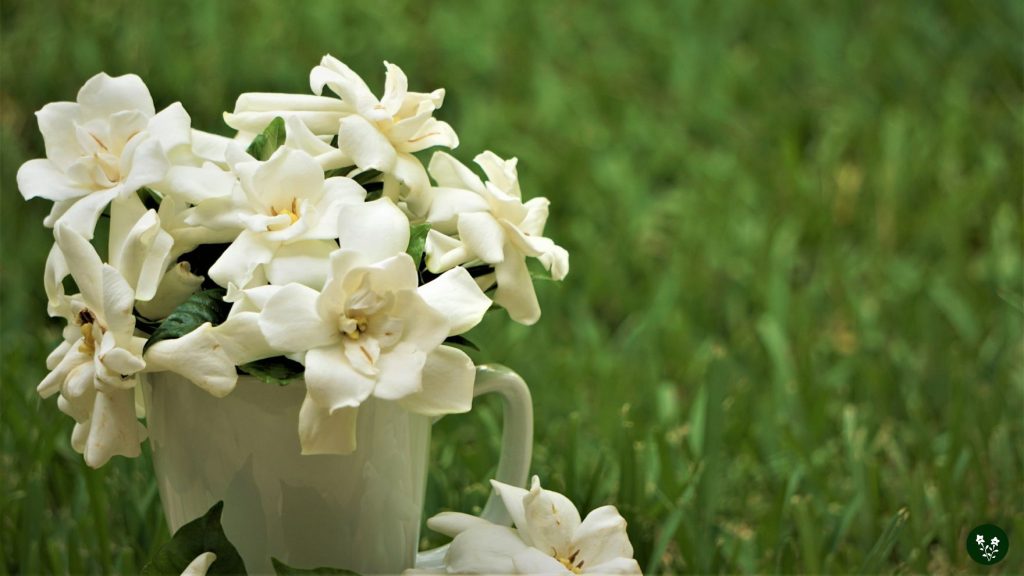
Discover the wonderful uses of the Gardenia flower! Besides its rich symbolism, the Gardenia flower has been utilized for various purposes throughout history.
Known for their intoxicating fragrance, these versatile blooms can offer you an array of practical and medicinal benefits.
When you think of Gardenia, tea might not be the first thing that comes to mind. However, you can enjoy Gardenia’s healthful properties by brewing a soothing cup of Gardenia tea.
Drinking this delightful tea can relieve anxiety and depression, making it an ideal solution for unwinding after a long day.
Traditional Chinese medicine has long relied on the healing powers of Gardenia to treat various ailments.
The flower extract, rich in beneficial properties, has been used to address fever, infection, and snakebites.
Did you know that Gardenia can also be beneficial for digestive health? If you struggle with constipation, incorporating Gardenia extract into your health regimen might provide some relief.
Apart from its medicinal properties, the enchanting scent of Gardenia has made it a go-to choice for perfumes and lotions.
The fragrance evokes a sense of relaxation, perfect for indulging in self-care or creating a calming atmosphere at home.
By incorporating Gardenia flower into your daily life, you can enjoy its myriad benefits, from relaxation to emotional and physical healing.
Embracing the various uses of this beautiful bloom will surely enrich your life in many ways.
5. Fun Facts About Gardenia Flower
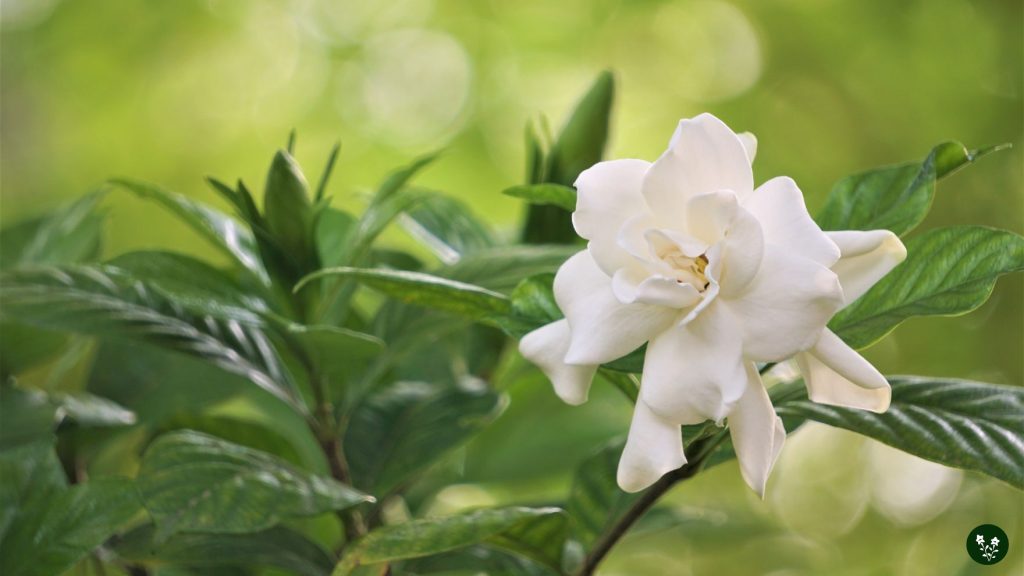
You might be surprised to learn some interesting facts about the gardenia flower. Not only does this beautiful bloom have deep symbolism, but it also has a rich history and unique characteristics.
Let’s take a moment to appreciate the gardenia flower by revealing some remarkable facts about it:
- Named after Alexander Garden, a Scottish-born American naturalist, the gardenia flower has existed for centuries.
- Often used as decoration for weddings and events, gardenias are extremely intricate, pure white flowers with a delightful and strong fragrance.
- These flowers are native to the tropical and subtropical regions of Africa, southern Asia, Australasia, and Oceania, making them a versatile plant suitable for various climates.
- Gardenias are often gifted to symbolize trust, love, and respect, especially among partners.
- In some cultures, these flowers represent everything associated with the spiritual world, such as pure attraction, peace, and harmony.
Next time you come across a gardenia flower or consider including it in a bouquet, remember these fascinating facts and the rich meaning behind this elegant bloom.
It’s a great way to appreciate the beauty of the gardenia flower and add depth to your understanding of its significance.
5. Best Time to Gift Someone Gardenia Flowers
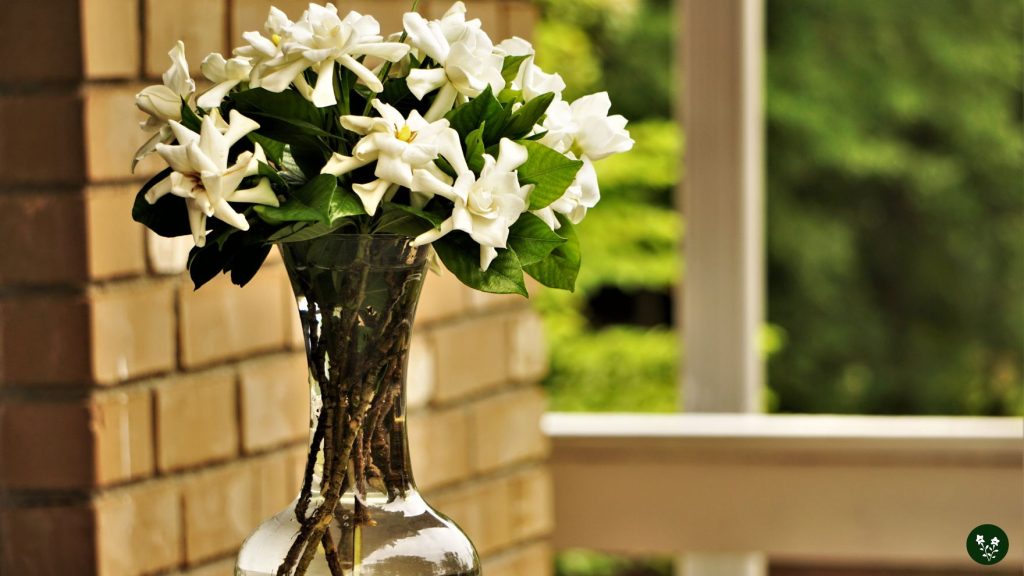
With their delicate beauty and delightful aroma, Gardenias make a splendid gift for many occasions.
Here are a few key moments when gifting gardenia flowers would be fitting:
- Weddings: The elegant, pure white gardenias bring a touch of grace to wedding settings. They can be given as gifts, used in the bridal bouquet, or incorporated into the decor for a stunning effect.
- Hidden or Passionate Love: Gardenias are a beautiful way to express your hidden or passionate love for someone special. Their white and red varieties symbolize purity, passion, and deep affection, making them perfect for conveying your feelings.
- Showing Trust and Respect: Gardenias can symbolize trust and respect for your loved ones, friends, or colleagues. Gifting gardenias communicates that you value and admire the person and trust them with your thoughts and emotions.
- Clarity and New Beginnings: When you want to acknowledge a fresh start or celebrate a milestone in a person’s life, choose gardenias. These flowers represent clarity, renewal, and hope for the future, making them an ideal gift for graduations, new job celebrations, or housewarming parties.
Whatever your reason for gifting gardenias, ensure that you choose fresh, healthy blooms that radiate their signature fragrance.
Just remember, it’s the timing of the gift and the heartfelt emotion behind it that makes gardenias truly special.
Discover the captivating world of flower meaning:
Leave a Reply